Transpiration: The Process and Significance
0 Comments
Objectives of Teaching Classification 1: Developing a Deeper Understanding of Living Organisms20/11/2023 Objectives of Teaching Classification 1
This information aligns with the Kenyan 8-4-4 education system, which is currently being replaced by the Competency-Based Curriculum (CBC) system. Classification 1 is a topic covered in Form 1 and is commonly examined by the Kenya National Examinations Council (KNEC) during the Kenya Certificate of Secondary Education (KCSE) examinations. The primary purpose of sharing this piece is to provide teachers and learners with valuable insights on what to focus on when studying this topic.
Objectives of Teaching Classification
Teaching classification plays a crucial role in helping learners develop a deeper understanding of the living world around them. By the end of this topic, learners should be able to achieve the following objectives:
Classification 1, Topics, Sub-Topics and Other Contents
Taxonomic Groups
The groups are Taxa (singular Taxon).
These groups, known as taxonomic levels, help in organizing and categorizing the vast diversity of living organisms. The taxonomic groups, in ascending order, are as follows:
Introduction to Classification I. Biology Form 1 Notes
Using a Magnifying Lens
Necessity/need for Classification
Understanding Eczema and Its Impact on Skin Health
Eczema, also known as atopic dermatitis, is a common skin condition characterized by dry, itchy, and inflamed patches of skin. It is not contagious and can vary in severity from mild to severe. Eczema can affect people of all ages, including infants, children, and adults.
Causes of Eczema:
Symptoms of Eczema:
Types of Eczema:
There are several types of eczema, including:
Treatment of Eczema:
While there is no cure for eczema, there are various treatment options available to manage symptoms and reduce flare-ups. These may include:
Learn more:
Why do animals become resistant to drugs?
Causes and Implications of Drug Resistance in Animal Populations
Introduction:
Drug resistance, or specifically antibiotic resistance, is a significant global concern that affects not only humans but also animals. This resistance occurs when microorganisms, such as bacteria and parasites, develop the ability to survive exposure to drugs that were once effective against them. Understanding the reasons behind the development of drug resistance in animals is crucial for addressing this growing problem.
Body:
Conclusion:
The emergence and spread of drug resistance in animals pose a significant threat to public health, animal health, and food production. Understanding the causes of drug resistance is crucial for implementing effective strategies to mitigate its impact. Addressing the overuse and misuse of drugs, promoting responsible use in agricultural and veterinary practices, facilitating the development of new drugs, and implementing infection control measures are essential steps towards combating drug resistance and preserving the efficacy of available treatment options. A comprehensive and collaborative approach is necessary to tackle this global challenge and ensure the continued effectiveness of drugs in the treatment of animal and human diseases.
CLASSIFICATION I:Binomial Nomenclature
Kingdoms
Living organisms are classified into five kingdoms namely;
Kingdom Fungi
Kingdom Monera (Prokaryota)
Kingdom Protoctista
Kingdom Plantae
Kingdom Animalia
External Features of Organisms
In plants we should look for:-
(I) FOSSIL RECORDS
Structural differences between apes and humans(ii) Comparative Anatomy
Examples of adaptive radiation I.Homologous structures
Beaks in birds have a common embryonic origin and basic structure. Depending on the type of food and mode of feeding this basic structure is modified in length, shape and size e.g. -Short stout beaks are common in seed eaters e.g. weaver birds. -Long slender beaks for nectar feeders e.g. sunbirds. -Strong hooked beaks for carnivorous birds e.g. eagles (c)Foot structure in birds They are modified for various functions and habitats although they have a common embryonic origin e.g.
This is where different structures are modified to perform similar functions. E.g. (i)Analogous structures They are those structures that have different embryonic origin but have evolved to perform similar functions due to the exploitation of the same kind of environment. Examples of analogous structures a.Wings The wings of birds and those of insects have different embryonic origin but both are adapted for flight. b.(ii) Eye structure The eye structures of humans and that of octopus are similar but their embryonic origin is different. III Vestigial structures They are those structures that have in the course of time ceased to be functional and therefore have become reduced in size or rudimentary. c.Examples of vestigial structures Appendix in man has no digestive function while in herbivores e.g. rat, its well developed and functions as the cellulose-digesting part of the alimentary canal. The python and the whale have no externally visible hind limbs but their original presence is evidenced by the existence of a rudimentary pelvic girdle. The kiwi (flightless bird) of New Zealand has reduced wings beneath the body plumage. A vestigial tail is present in humans in the form of a much reduced coccyx. The nictitating membrane in the eye of the mammals is now reduced and functionless; but in birds and fish it can move over the eye and act as the 3rd eyelid. (iii) Comparative embryology (j)The embryos of different vertebrate groups (fish, birds, amphibians, reptiles and mammals are morphologically similar during the early stages of development. This relationship is as a result of their common ancestry. The closer the resemblance between the early stage embryos, the closer is their evolutionary relationship. This theory is called recapitulation theory. It can also be atated as “ontogeny recapiturates phylogeny” (iv) Geographical distribution of organisms The theory of “continental drift” supposes that at one time the present continents formed one large single land mass which later broke up and the parts drifted away from each other. Before drifting occurred there had been migration of animals from the centre of the land mass mainly fro Asia to Australia. After the drift, animals with a common ancestry became isolated and evolved into different species. a.Examples Amazon forest in South America is inhabited with monkeys with long tails while in African forests there are the short-tailed monkeys. The panthers and the jaguars in the forests represent the cat family while in Africa we have the leopards and cheetahs and in Asia there are the tigers. The llamas of the Amazon forest and modern camels of Africa and Asia are thought to have had a common ancestry in North America. It’s believed that from their common points of origin, they migrated into different continents thus became isolated and evolved into different species. The process of initial migration and subsequent isolation by physical barriers such as oceans, dry deserts and mountains seems to have given rise to a wide variety of animal and plant types. (v)Cell biology The cells of all higher organisms show basic similarities in their structure and functions. Thus all these cells contain cell membranes and organelles such as ribosome, Golgi bodies, mitochondria etc. (k)They also have some biological chemicals in common e.g. ATP and DNA. This strongly indicates that all cell types have a common ancestral origin. (l)Also plant cells contain cellulose cell wall, cell sap, chloroplast etc. all these features are absent in animal cells. (m)Among animals blood pigments are of universal occurrence. These include haemoglobin (vertebrates and invertebrates), haemocyanin (moluscs and crustaceans) and chlorocruorin (annelids). (vi)Comparative serology (n)Experiments with serum (serological tests) are used to show phylogenetic relationships e.g. (o)-If human serum is injected into a rabbit, the proteins in the serum act as antigens. The rabbit produces antibodies against the human proteins. When blood with antibodies is drawn from the rabbit and mixed with serum from different animals, an immunological reaction occurs forming a precipitate. The amount of precipitate formed varies from one animal to the other. The greater the amount the closer the phylogenetical relationship between the animal and the human being. Mechanism of evolution Lamarck’s theory (Theory of use and disuse) (p)This theory was proposed by Jean Baptiste de Lamarck (1815). He proposed that when the environment demanded the need for a particular structure in an organism, the organism develop it in response to the demand. This led to the natural use and disuse of structures producing changes in the individual during its life time. He further proposed that these changes or structures that were acquired during the life time of an individual were then transmitted to their offspring and subsequent generations resulting in the emergence of new forms or new species. a.Examples
NB This theory was rejected because phenotypically acquired characteristics which do not affect the genotype of an individual cannot be inherited. Darwin’s theory of Natural selection This theory was proposed by Charles Darwin (1859). a.Main features of the theory He observed that variations arose by chance and from within the individual. Through sexual reproduction the characteristics are transmitted to successive offspring. Some of the variations confer an advantage to the individual while others are disadvantageous. He proposed that in nature there exist a phenomenon known as “Natural selection” which “selects” those individuals best suited to an environment. He observed that the number of offspring by far outnumber the parental generation but due to eliminating factors such as predation, diseases, competition for food, breeding conditions etc only a few survive to adulthood and are able to reproduce. He explained that in nature there exists a “struggle for existence” and those best suited for an environment survive. He called this “The survival of the fittest”. He proposed that “Natural selection” is a chance occurrence. Neither the environment nor the individual controls the direction of change. Those individuals that are selected for reproduction thus transmit the variations to their offspring. The gradual accumulation of small variations from generation to generation over a long period of time leads to the emergence of new forms of species. Natural selection in action Strains or varieties could offer evidence of evolution in progress e.g. i Peppered moth (Biston betularia) This moth occurs in Britain. They occur in two forms i.e. speckled white form and black melanic form. Before the industrial revolution, the speckled white form was well camouflaged against tree trunks with similar pattern and colouration. But around 1848 during industrial revolution the environment was darkened by soot. Due to this change the black melanic form blended well against the bark of trees which had been darkened by soot and smoke. These darker forms were better protected in the industrial area against predation from birds than the lighter forms. In the smoke and soot polluted areas there is greater frequency of black melanic form while in the soot free areas the speckled white form predominates. Thus the agent of natural selection was selective predation on the unprotected forms. e.g. ii Sickle cell trait It’s known that there is a high frequency of this mutant gene in places where malaria incidence is high. This is because those who are heterozygous HbAHbS have immunity to malaria a situation called heterozygous advantage. e.g. iii Resistance to drugs, pesticides and antibiotics Some pathogens and pests usually survive and reproduce even when they are exposed to the antibiotics and pesticides repeatedly. These instances show that within the population some individuals posses the gene for resistance or acquire it through mutation hence survives the chemical. Those that survive transmit this characteristic to their offspring thus establishing a new population of resistant forms. -Mosquitoes posses a gene that makes them synthesise an enzyme against DDT. -The control of plasmodium has been made difficult due to the ability of the plasmodium to rapidly change its coat surface antigens. This makes the plasmodia resist the drug meant to kill them. Chemical evolution
Key Points
Evolution is the process that attempts to explain the origin, diversity, and unity of life. It involves the gradual change of living organisms from simple life forms to more complex forms over a long period of time. There are different theories that try to explain the origin of life.
One theory is the concept of special creation, which is a belief held by major religions and folklore. It states that the whole universe and everything within it were created by a supreme being, such as God. According to this theory, life forms were created in a perfect form and have remained unchanged over time. This belief is based on faith and is not scientifically testable or disputable. Another theory is chemical evolution, which suggests that life probably began through the chemical reactions of light bringing together elements to form simple molecules such as water, ammonia, and methane. It is theorized that millions of years ago, simple molecules in the universe combined to form different compounds, which eventually led to the formation of complex molecules like DNA. The replication of these molecules resulted in the formation of simple life forms like viruses and bacteria. This period of the combination of chemicals to form the first living organisms is called the period of chemical evolution. The theory of chemical evolution holds that life came into existence through combinations of chemicals. The initial life forms were simple and have changed over the years to form the complex organisms we see today. This is known as the principle of organic evolution. There is scientific evidence in the form of experiments, artifacts, and fossils that support this theory. It is also theorized that the universe came into existence approximately 15 billion years ago, the solar system formed about 6 billion years ago, and the Earth formed 4 billion years ago. Since then, the Earth has undergone cooling and structural changes, providing an environment for the development of living organisms. Evidence for organic evolution includes fossil records, which show the existence of organisms that have changed over time. Additionally, the theory of natural selection proposed by Charles Darwin explains how variations within a species can lead to the emergence of new forms. Natural selection occurs when individuals with traits that are best suited for their environment have a higher chance of survival and reproduction, passing on these advantageous traits to their offspring. In summary, evolution is the process that explains the origin, diversity, and unity of life. It involves gradual changes in living organisms over time. Theories such as special creation and chemical evolution attempt to explain the origin of life. The theory of organic evolution suggests that life forms have changed over time, supported by scientific evidence such as fossils. Natural selection plays a role in the emergence of new forms, as individuals with advantageous traits are more likely to survive and reproduce. BIOLOGY NOTES FORM 4 IN PDF
Transport in Plants and Animals
Transport in plants
Internal structure of roots and root hairs
The main functions of roots are;
Internal structure of a root hair cell
The main functions of the stem are;
Collenchyma
The Stem
Absorption of Water and Mineral Salts Absorption of Water
Transpiration
Structure and function of Xylem
Tracheids
Forces involved in Transportation of Water and Mineral Salts
Transpiration pull
As water vaporises from spongy mesophyll cells into sub-stomatal air spaces, the cell sap of mesophyll cells develop a higher osmotic pressure than adjacent cells. Water is then drawn into mesophyll cells by osmosis from adjacent cells and finally from xylem vessels. A force is created in the leaves which pulls water from xylem vessels in the stem and root. This force is called transpiration pull. Cohesion and Adhesion: The attraction between water molecules is called cohesion. The attraction between water molecules and the walls of xylem vessels is called adhesion. The forces of cohesion and adhesion maintain a continuous flow of water in the xylem from the root to the leaves. Capillarity: This is the ability of water to rise in fine capillary tubes due to surface tension. Xylem vessels are narrow, so water moves through them by capillarity. Root Pressure: If the stem of a plant is cut above the ground level, it is observed that cell sap continues to come out of the cut surface. This shows that there is a force in the roots that pushes water up to the stem. This force is known as root pressure.
Importance of Transpiration
Transpiration leads to excessive loss of water if unchecked. Some beneficial effects are:
The factors that affect transpiration are grouped into two. i.e. environmental and structural. Environmental factors Temperature High temperature increases the internal temperature of the leaf. Which in turn increases kinetic energy of water molecules which increases evaporation. High temperatures dry the air around the leaf surface maintaining a high concentration gradient. More water vapour is therefore lost from the leaf to the air.
Humidity
The higher the humidity of the air around the leaf, the lower the rate of transpiration. The humidity difference between the inside of the leaf and the outside is called the saturation deficit. In dry atmosphere, the saturation deficit is high. At such times, transpiration rate is high. Wind Wind carries away water vapour as fast as it diffuses out of the leaves. This prevents the air around the leaves from becoming saturated with vapour. On a windy day, the rate of transpiration is high. Light Intensity When light intensity is high; more stomata open hence high rate of transpiration. Atmospheric Pressure The lower the atmospheric pressure the higher the kinetic energy of water molecules hence more evaporation. Most of the plants at higher altitudes where atmospheric pressure is very low have adaptations to prevent excessive water-loss. Availability of Water The more water there is in the soil, the more is absorbed by the plant and hence a lot of water is lost by transpiration.
Structural Factors
Cuticle Plants growing in arid or semi-arid areas have leaves covered with a thick waxy cuticle. Stomata The more the stomata, the higher the rate of transpiration. Xerophytes have few stomata which reduce water-loss. Some have sunken stomata which reduces the rate of transpiration as the water vapour accumulates in the pits. Others have stomata on the lower leaf surface hence reducing the rate of water-loss. Some plants have reversed stomatal rhythm whereby stomata close during the day and open at night. This helps to reduce water-loss. Leaf size and shape Plants in wet areas have large surface area for transpiration. Xerophytes have small narrow leaves to reduce water-loss. The photometer can be used to determine transpiration in different environmental conditions. Translocation of organic compounds Translocation of soluble organic products of photosynthesis within a plant is called translocation. It occurs in phloem in sieve tubes. Substances translocated include glucose, amino acids, and vitamins. These are translocated to the growing regions like stem, root apex, storage organs e.g. corms, bulbs and secretory organs such as nectar glands. Phloem
Phloem is made up of;
TRANSPORT IN PLANTS.
|
|||||||||||||||||||||
TYPES OF GERMINATION
- The nature of germination varies in different seeds.
- During germination the cotyledons may be brought above the soil surface.
- This type of germination is called epigeal germination.
- If during germination the cotyledons remain underground the type of germination is known as hypogeal.
Epigeal Germination
- During the germination of a bean seed, the radicle grows out through the micropyle.
- It grows downwards into the soil as a primary root from which other roots arise.
- The part of the embryo between the cotyledon and the radicle is called the hypocotyl.
- This part curves and pushes upwards through the soil protecting the delicate shoot tip.
- The hypocotyls then straightens and elongates carrying with it the two cotyledons which turn green and leafy.
- They start manufacturing food for the growing seedling.
- The plumule which is lying between two cotyledons, begins to grow into first foliage leaves which start manufacturing food.
Hyopgeal Germination
- In maize, the endosperm provides food to the embryo which begins to grow.
- The radicle along with a protective covering grows out of the seed.
- The epicotyl is the part of the embryo between the cotyledon and the plumule.
- The epicotyl elongates and the plumule grows out of the coleoptile and forms the first foliage leaves.
- The seedling now begins to produce its own food and the endosperm soon shrivels.
- This type of germination in which the cotyledon remains below the ground is known as hypogeal germination.
Practical Activity - To investigate epigeal and hypogeal germination
Requirements
- Tin or box,
- soil,
- water,
- maize grains
- bean seeds.
- Place equal amounts of soil into two containers labelled A and B.
- In A, plant a few maize grains. In B, plant a few bean seeds.
- Water the seeds and continue watering daily until they germinate.
- Place your set-ups on the laboratory bench.
- Observe daily for germination.
- On the first day the seedlings emerge from the soil, observe them carefully with regard to the soil level.
- Carefully uproot one or two seedlings from each set.
- Observe and draw the seedlings from each set Label the parts and indicate the soil level on your diagram.
- On the fifth day since emergence, again uproot another seedling.
- Observe and draw.
- Indicate the soil level on your diagram..
- Tabulate the differences between the two types of germination studied.
To download complete set of this notes, questions and revision kit, See pricing ...
GROWTH AND DEVELOPMENT IN PLANTS
The main growth and development phase in plants begins with the germination of the mature seed. Seeds are of two kinds depending on the number of cotyledons or embryo leaves.
Practical Activity:
Requirements
Practical Activity:
Requirements
- Bean seeds and maize grains which have been soaked overnight.
- Scalpel or razor blades,
- iodine solution,
- Petri-dish and
- hand lens.
- Using a scalpel or razor blade make longitudinal sections (LS) of both the bean seed and the maize grain.
- Observe the LS of the specimens using a hand lens.
- Note any structural difference between the specimens.
- Draw the LS of each specimen and label.
- Put a drop of iodine solution on the cut surfaces of both specimens.
- Note any differences in colouration with iodine on the surfaces of the two specimens.
- On your diagrams indicate the distribution of the stain.
- Account for the difference in distribution of the colouration with iodine in the two specimens.
STRUCTURE OF THE SEED
- A typical seed consists of a seed coat enclosing an embryo.
- The seed coat is the outer covering which, in most seeds, is made up of the two layers, an outer testa and inner one, the tegmen.
- The testa is thick; the tegmen is a transparent membrane tissue.
- The two layers protect the seed bacteria, fungi and other organisms which may damage it.
- There is a scar called hilum on one part of the seed.
- This is point where the seed had been attached the seed stalk or funicle.
- Near one end of hilum is a tiny pore, the micropyle.
- This allows water and air into the embryo, embryo is made up of cotyledons, a plumule (embryonic (and a radicle (the embryonic root).
- In some seeds the cotyledons swollen as they contain stored food for growing plumule and radicle. Such seeds, called non-endospermic seeds.
- In other cases, the seeds have their food stored in endosperm.
- Such seeds are called endospermic seeds. Seeds with one cotyledon are referred to as monocotyledonous while those with two are referred to dicotyledonous.
- This is the major basis in differentiation between the two large categories of plants, the monocotyledonae and dicotyledonae.
Dormancy in Seeds
- The embryo of a dry, fully developed seed usually passes through a period of rest after ripening period.
- During this time the seed performs all its life (physiological) processes very slowly and uses up little food. This is a period of dormancy.
- Even if all the favorable environmental conditions for germination are provided to the seed during this period of dormancy, the seed will not germinate.
- This is due to the fact that the seed embryo may need to undergo further development before germination.
- Some seeds can germinate immediately after being shed from the parent plant (e.g. most tropical plants) while others must pass through dormancy period, lasting for weeks, months or even years before the seed can germinate.
- Dormancy provides the seeds with enough time for dispersal so that they can germinate in a suitable environment.
- It also enables seeds to survive during adverse environmental conditions without depleting their food reserves.
- The embryo has time to develop until favorable conditions are available e.g. availability of water
Factors that Cause Dormancy
- Embryo may not yet be fully developed.
- Presence of chemical inhibitors that inhibit germination in seeds e.g. Abscisic acid.
- Very low concentrations of hormones e.g. gibberellins and enzymes reduces the ability of seeds to germinate.
- Hard and impermeable seed coats prevent entry of air and water in some seeds e.g. wattle.
- In some seeds the absence of certain wavelengths of light make them remain dormant e.g. in some lettuce plants.
- Freezing of seeds during winter lowers their enzymatic activities rendering them dormant.
Ways of Breaking Dormancy
- When the seed embryos are mature then the seed embryos can break dormancy and germinate.
- Increase in concentration of hormones e.g. cytokinins and gibberellins stimulate germination.
- Favourable environmental factors such as water, oxygen and suitable temperature.
- Some wavelengths of light trigger the production of hormones like gibberellins leading to breaking of dormancy.
- Scarification i.e. weakening of the testa is needed before seeds with hard impermeable seed coats can germinate.
- This is achieved naturally by saprophytic bacteria and fungi or by passing through the gut of animals.
- In agriculture the seeds of some plants are weakened by boiling, roasting and cracking e.g. wattle.
Seed Germination
- The process by which the seed develops into a seedling is known as germination.
- It refers to all the changes that take place when a seed becomes a seedling.
- At the beginning of germination water is absorbed into the seed through the micropyle in a process known as imbibition and causes the seed to swell.
- The cells of the cotyledons become turgid and active.
- They begin to make use of the water to dissolve and break down the food substances stored in the cotyledons.
- The soluble food is transported to the growing plumule and radicle.
- The plumule grows into a shoot while the radicle grows into a root.
- The radical emerges from the seed through micropyle, bursting the seed coat as it does so.
Conditions Necessary for Germination
- Seeds can easily be destroyed by unfavourable conditions such as excessive heat, cold or animals.
- Seeds need certain conditions to germinate and grow.
- Some of these conditions are external, for example water, oxygen and suitable temperature while others are internal such as enzymes, hormones and viability of the seeds themselves.
1. Water
- A non-germinating seed contains very little water.
- Without water a seed cannot germinate.
- Water activates the enzymes and provides the medium for enzymes to act and break down the stored food into soluble form.
- Water hydrolyses and dissolves the food materials and is also the medium of transport of dissolved food substances through the various cells to the growing region of the radical and plumule.
- Besides, water softens the seed coat which can subsequently burst and facilitate the emergence of the radicle.
- Germinating seeds require energy for cell division and growth.
- This energy is obtained from the oxidation of food substances stored in the seed through respiration thus making oxygen an important factor in seed germination.
- Seed in water logged soil or seed buried deep into the soil will not germinate due to lack of oxygen.
- Several hormones play a vital role in germination since they act as growth stimulators.
- These include gibberellins and cytokinins.
- These hormones also counteract the effect of germination inhibitors.
- Only seeds whose embryos are alive and healthy will be able to germinate and grow.
- Seeds stored for long periods usually lose their viability due to depletion of their food reserves and destruction of their embryo by pests and diseases.
- Most seeds require suitable temperature before they can germinate.
- Seeds will not germinate below 0°C or above 47° C.
- The optimum temperature for seeds to germinate is 30°C.
- At higher temperature the protoplasm is killed and the enzymes in the seed are denatured.
- At very low temperatures the enzymes become inactive.
- Therefore, the protoplasm and the enzymes work best within the optimum temperature range.
- The rate of germination increases with temperature until it reaches an optimum.
- This varies from plant to plant.
- Enzymes play a vital role during germination in the breakdown and subsequent oxidation of food.
- Food is stored in seeds in form of carbohydrates, fats and proteins which are in insoluble form.
- The insoluble food is converted into a soluble form by the enzymes.
- Carbohydrates are broken down into glucose by the diastase enzyme, fats into fatty acids and glycerol by lipase, and proteins into amino acids by protease.
- Enzymes are also necessary for the conversion of hydrolysed products to new plant tissues.
To download complete set of this notes, questions and revision kit, See pricing ...
ROLE OF PLACENTA
|
TABLE OF CONTENTS
|
Protection
Maternal blood and foetal blood do not mix. This ensures that the pathogens and toxins from maternal blood do not reach the foetus. The placenta allows maternal antibodies to pass into the foetus, providing the foetus with immunity. |
Nutrition
The placenta facilitates the transfer of nutrients from maternal blood to foetus.
Excretion
Placenta facilitates the removal of nitrogenous wastes from the foetus' blood to maternal blood.
Gaseous exchange
Oxygen from the maternal blood diffuses into the foetal blood while carbon (IV) oxide from foetal blood diffuse into maternal blood.
Production of hormones
Placenta produces progesterone and oestrogen.
The placenta facilitates the transfer of nutrients from maternal blood to foetus.
Excretion
Placenta facilitates the removal of nitrogenous wastes from the foetus' blood to maternal blood.
Gaseous exchange
Oxygen from the maternal blood diffuses into the foetal blood while carbon (IV) oxide from foetal blood diffuse into maternal blood.
Production of hormones
Placenta produces progesterone and oestrogen.
Gestation period
The period between conception and birth is called gestation.
In humans gestation takes nine months (40 weeks).
The embryo differentiates into tissues and organs during this period.
Week 1 to 3:
Zygote divides to form blastocyst.
Implantation takes place.
The three germ layers form endoderm, mesoderm and ectoderm.
Nervous system starts to form.
Week 4 to 7:
Development of circulating and digestive systems.
Further development of nervous system, formation of sensory organs,
All major internal organs are developed.
At week 5, heartbeat starts.
Week 8 to 24:
All organs well developed including sex organs.
Hair, finger and toe nails grow.
Foetus move and eyelids open.
Week 25- 30:
The fully developed foetus responds to touch and noises and moves vigorously.
The head turns and faces downwards ready for birth.
Week 31-40:
Foetus increases in size.
Birth occurs.
In humans gestation takes nine months (40 weeks).
The embryo differentiates into tissues and organs during this period.
Week 1 to 3:
Zygote divides to form blastocyst.
Implantation takes place.
The three germ layers form endoderm, mesoderm and ectoderm.
Nervous system starts to form.
Week 4 to 7:
Development of circulating and digestive systems.
Further development of nervous system, formation of sensory organs,
All major internal organs are developed.
At week 5, heartbeat starts.
Week 8 to 24:
All organs well developed including sex organs.
Hair, finger and toe nails grow.
Foetus move and eyelids open.
Week 25- 30:
The fully developed foetus responds to touch and noises and moves vigorously.
The head turns and faces downwards ready for birth.
Week 31-40:
Foetus increases in size.
Birth occurs.
Reproductive Hormones
Examining the stages of mitosis
- About 2 mm of a root tip of onion bulb is cut off and placed on a microscope slide.
- A stain e.g. aceto-orcein is added and the root tip macerated using a scapel.
- A cover slip is added and observations made.
- Different stages of mitosis can be observed.
- An unopened bud of Tradescantia is obtained
- The anther is removed and placed on a microscope slide.
- A few drops of hydrochloric acid and acetic-orcein stain are added.
- A cover slip is placed on the anther.
- Pressing the cover slip gives a thin squash, which is observed under the microscope.
- Different stages of meiosis are observed.
- Rhizopus grow on moist bread left under suitable temperature
- A piece of moist bread is placed on a petri-dish or enclosed in a plastic bag and observe daily for four days.
- Under a low power microscope the sporangia and stolons can be observed.
- Obtain the fern plant.
- Detach a frond from the plant and observe the under-side using a hand lens to see the raised brown patches - the sori.
- Open up the sorus to observe the sporangia.
To examine spores on sori of ferns
Dispersal of fruits and seeds
- Obtain the fern plant.
- Detach a frond from the plant and observe the under-side using a hand lens to see the raised brown patches - the sori.
- Open up the sorus to observe the sporangia.
- Obtain insect pollinated flowers e.g. crotalaria, hibiscus/Ipomea, Solanum, incunum.
- Note the scent, colour and nectar guides.
- A description of the calyx, corolla, androecium and gynoecium is made.
- Obtain a wmd pollinated flower e.g.,' maize, star-grass, sugar-cane, Kikuyu grass.
- Observe the glumes, spikes and spikelet.
- Examine a single floret, and identify the androecium and gynoecium.
- Obtain different fruits - oranges, mangoes, maize, castor oil, bean pod, black jack .
- Observe the fruits, classify them into succulent, dry-dehiscent or indehiscent.
- Obtain an orange and a mango fruit.
- Make a transverse section.
- Observe the cut surface and draw and label the parts.
- Note that the fruit is differentiated into epicarp, mesocarp and endocarp.
- Obtain a pod of a legume.
- Open up the pod and observe the exposed surface.
- Draw and label the parts.
Dispersal of fruits and seeds
- Obtain animal dispersal fruits, like oranges, tomatoes, black jack, sodom apple.
- Identify the way by which each is adapted to dispersal by animals.
- Obtain wind dispersed fruit/seed e.g. Nandi flame, Jacaranda Sonchus, cotton seed, Tecoma.
What is Measurement of Growth?
Growth can be estimated by measuring some aspect of the organism such as height, weight, volume and length over a specified period of time. The measurements so obtained if plotted against time result into a growth curve.
Study Question
The following results were obtained from a study of germination and early growth of maize.
The grains were sown in soil in a greenhouse and.at two-day intervals. Samples were taken, oven dried and weighed. See table.
The grains were sown in soil in a greenhouse and.at two-day intervals. Samples were taken, oven dried and weighed. See table.
Plot a graph of dry mass of embryo against time after sowing.
Describe the shape of the graph.
For most organisms when the measurements are plotted they give an S-shaped graph called a sigmoid curve such as in figure. This pattern is due to the fact that growth tends to be slow at first and then speeds up and finally slows down as adult size is reached. A sigmoid curve may therefore be divided into four parts.
For most organisms when the measurements are plotted they give an S-shaped graph called a sigmoid curve such as in figure. This pattern is due to the fact that growth tends to be slow at first and then speeds up and finally slows down as adult size is reached. A sigmoid curve may therefore be divided into four parts.
Lag phase (slow growth)
This is the initial phase during which little growth occurs. The growth rate is slow due to various factors namely:
- The number of cells dividing are few.
- The cells have not yet adjusted to the surrounding environmental factors.
Exponential phase (log phase)
This is the second phase during which growth is rapid or proceeds exponentially. During this phase the rate of growth is at its maximum and at any point, the rate of growth is proportional to the amount of material or numbers of cells of the organism already present.
This rapid growth is due to:
This rapid growth is due to:
- An increase in number of cells dividing, 2-4-8-16-32-64 following a geometric progression,
- Cells having adjusted to the new environment,
- Food and other factors are not limiting hence cells are not competing for resources,
- The rate of cell increase being higher than the rate of cell death.
Decelerating Phase
This is the third phase during which time growth becomes limited as a result of the effect of some internal or external factors, or the interaction of both.
The slow growth is due to:
The slow growth is due to:
- The fact that most cells are fully differentiated.
- Fewer cells still dividing,
- Environmental factors (external and internal) such as:
- shortage of oxygen and nutrients due to high demand by the increased number of cells.
- space is limited due to high number of cells.
- accumulation of metabolic waste products inhibits growth.
- limited acquisition of carbon (IV) oxide as in the case of plants.
Plateau (stationary) phase
This is the phase which marks the period where overall growth has ceased and the parameters under consideration remain constant.
This is due to the fact that:
This is due to the fact that:
- The rate of cell division equals the rate of cell death.
- Nearly all cells and tissues are fully differentiated, therefore there is no further increase in the number of cells.
- The nature of the curve during this phase may vary depending on the nature of the parameter, the species and the internal factors.
- In some cases, the curve continue to increase slightly until organism dies as is the case monocotyledonous plants, man invertebrates, fish and certain reptiles. indicates positive growth.
- In some other cases the curve flattens out indicating change in growth while other growth curves may tail off indicating a period of negative growth rate.
- This negative pattern characteristic of many mammals including humans and is a sign of physical senses associated with increasing age.
PRACTICAL ACTIVITY I: PROJECT
To measure the growth of a plant
Requirements
Small plots/boxes, meter rule and seeds of beans (or green grams, peas, maize),
Procedure
Requirements
Small plots/boxes, meter rule and seeds of beans (or green grams, peas, maize),
Procedure
- Place some soil in the box or prepare a small plot outside the laboratory.
- Plant some seeds in the box and place it in a suitable place outside the laboratory (or plant the seeds in your plot).
- Water the seeds daily.
- Observe the box/plot daily and note the day the seedlings emerge out of the soil.
- Measure the height of the shoot from the soil level up to the tip of the shoot. Repeat this with four other seedlings. Work out the average height of the shoots for this day.
- Repeat procedure 5 every three days for at least three weeks.
- Record the results in a table form.
- On the same seedlings measure the length of one leaf from each of the five seedlings (from leaf apex to its attachment on the stem
- Calculate the average length of the leaves and record in the table.
- Plot a graph of the height of the shoot against time. On the same axes plot length of leaf against time.
- Compare the two graphs drawn.
Reproduction in Animals
- Sexual reproduction involves the fusion of gametes.
- In animals two individuals are involved, a male and a female.
- Special organs known as gonads produce gametes.
- In males testes produce sperms while in females ovaries produce ova.
- The fusion of male gamete and female gamete to form a zygote is called fertilisation.
External fertilization
- Example in amphibians takes place in water.
- The male mounts the female and shed sperms on the eggs as they are laid.
- Eggs are covered by slippery jelly-like substance which provides protection.
- Many eggs are released to increase the chances of survival.
- This occurs in reptiles, birds and mammals.
- Fertilisation occurs within the body of the female.
- Fewer eggs are produced because there are higher chances of fertilisation since sperms are released into the female body.
Reproduction in Humans
Structure of female reproduction system,
The female reproduction system consist of the following: Ovaries
The female reproduction system consist of the following: Ovaries
- Are two oval cream coloured structures found in lower abdomen below the kidneys.
- They produce the ova.
- Are tubes which conduct the ova produced by the ovaries to the uterus.
- Fertilisation occurs in the upper part of the oviduct.
- The uterus is a hollow muscular organ found in the lower abdomen.
- The embryo develops inside the uterus.
- The inner lining endometrium supplies nutrients to embryo.
- The embryo is implanted into the inner uterine wall- the endometrium which nourishes the embryo.
- The thick muscles of the uterus assist in parturition.
- Has a ring of muscles that separates the uterus from the vagina.
- It forms the opening to the uterus
- Is a tube that opens to the outside and it acts as the copulatory and birth canal through the vulva.
Structure of male reproductive system
The male reproductive system consists of the following:
Testis:
The male reproductive system consists of the following:
Testis:
- Each testis is a mass of numerous coiled tubes called semniferous tubules.
- Each is enclosed within a scrotal sac that suspends them between the thighs.
- This ensures that sperms are maintained at a temperature lower than that of the main body.
- The lining of seminiferous tubules consists of actively dividing cells which give rise to sperms.
- Between the seminiferous tubules are interstitial cells which produce the male hormones called androgens e.g. testosterone.
- The seminiferous tubules unite to form the epididymis, which is a coiled tube where sperms are stored temporarily .
- Vas deferens (sperm duct) is the tube through which sperms are carried from testis to urethra.
- Seminal vesicle produces an alkaline secretion which nourishes the spermatozoa.
- Produces an alkaline secretion to neutralise vaginal fluids.
- Secretes an alkaline fluid.
- All these fluids together with spermatozoa form semen.
- Is a long tube through which the semen is conducted during copulation.
- It also removes urine from the bladder.
- Is an intro-mittent organ which is inserted into the vagina during copulation.
Fertilisation in Animals
- Fertilisation is preceded by copulation in which the erect penis is inserted into the vagina.
- This leads to ejaculation of semen.
- The sperms swim through the female's genital tract to the upper part of the oviduct.
- The head of the sperm penetrates the egg after the acrosome_ releases lytic enzymes t dissolve the egg membrane.
- The tail is left behind.
- Sperm nucleus fuses with that of the ovum and a zygote is formed.
- A fertilisation membrane forms around the zygote which prevents other sperms from penetrating the zygote.
- After fertilisation the zygote begins to divide mitoticaly as it moves towards the uterus.
- It becomes embedded in the wall of the uterus a process called implantation.
- By this time the zygote is a hollow ball of cells called blastocyst or embryo.
- In the uterus the embryo develops villi which project into uterus for nourishment later the villi and endometrium develop into placenta.
- Embryonic membranes develop around the embryo.
- The outermost membrane is the chorion which forms the finger-like projections (chorionic villi) which supply nutrients to the embryo.
- The amnion surrounds the embryo forming a fluid filled cavity within which the embryo lies.
- Amniotic cavity is filled with amniotic fluid.
- This fluid acts as a shock absorber and protects the foetus against mechanical injury.
- It also regutates temperature.
- The chorionic villi, allantois together with the endometrium from the placenta.
- The embryo is attached to the placenta by a tube called umbilical cord which has umbilical vein and artery.
- The maternal blood in the placenta flows in the spaces lacuna and surrounds capillaries from umbilical vein and artery.
- The umbilical cord increase in length as the embryo develops.
Growth is a characteristic feature of all living organisms.
Most multi cellular organisms start life as a single cell and gradually grow into complex organisms with many cells. This involves multiplication of cells through the process of cell division.
This quantitative permanent increase in size of an organism is referred to as growth.
Most multi cellular organisms start life as a single cell and gradually grow into complex organisms with many cells. This involves multiplication of cells through the process of cell division.
This quantitative permanent increase in size of an organism is referred to as growth.
For growth to take place the following aspects occur
- Cells of organisms assimilate nutrients hence increase in mass.
- Cell division (mitosis) that lead to increase in the number of cells.
- Cell expansion that leads to enlargement an increase in the volume and size of the organism. It is therefore possible to measure growth using such parameters as mass, volume, length, height, surface area.
- On the other hand development is the qualitative aspect of growth which involves differentiation of cells and formation of various tissues in the body of the organism in order for tissues to be able to perform special functions.
- It is not possible to measure all aspects of development quantitative.
- Therefore development can be assessed in terms of increase in complexity of organism e.g. development of leaves, flowers and roots.
- A mature human being has millions of cells in the body yet he or she started from; single cell, that is, a fertilised egg.
- During sexual reproduction mammals an ovum fuses with a sperm to form a zygote.
- The zygote divides rapidly without increasing in size, first into 2, 4, 8, 16,32, 64 and so on, till it forms a mass cells called morula.
- These first cell division is called cleavages.
- The morula develops a hollow part, resulting into a structure known as a blastula (blastocyst).
- Later, blastocyst cells differentiate into an inner layer (endoderm) and the outer layer (ectoderm).
- The two-layered embryo implants into the uterine wall and, by obtaining nutrients from the maternal blood, starts to grow and develop.
- As the embryo grows and develops, changes occur in cell sizes and cell -types.
- Such changes are referred to as growth and development respectively.
- These processes lead to morphological and physiological changes in the developing young organism resulting into an adult that is more complex and efficient.
- In the early stages, all the cells of the embryo look alike, but as the development process continues the cells begin to differentiate and become specialized into different tissues to perform different functions.
- Growth involves the synthesis of new material and protoplasm.
- This requires a continuous supply of food, oxygen, water, warmth and means of removing waste products.
- In animals, growth takes place all over the body but the rates differ in the various parts of the body and at different times.
- In plants however, growth and cell division mostly take place at the root tip just behind the root cap and stem apex.
- This is referred to as apical growth which leads to the lengthening of the plant.
- However, plants do not only grow upwards and downwards but sideways as well.
- This growth leads to an increase in width (girth) by the activity of cambium cells.
- The increase in girth is termed as secondary growth.
Male
- Testerone is the main androgen that stimulates the development of secondary sexual characteristics.
- Broadening of the shoulders.
- Deepening of the voice due to enlargement of larynx.
- Hair at the pubic area, armpit and chin regions.
- Penis and testis enlarge and produce sperms.
- Body becomes more masculine.
Female
- Enlargement of mammary glands.
- Hair grows around pubic and armpit regions.
- Widening of the hips.
- Ovaries mature and start producing ova.
- Menstruation starts.
- Oestrogen triggers the onset of secondary sexual characteristics.
Sexually transmitted infections (STl)
Menstrual Cycle
- This is characterized by discharge of blood and tissue debris (menses) from the uterus every 28 days.
- This is due to the breakdown of the endometrium which occurs when the level of progesterone falls and the girl starts to menstruate.
- The follicle stimulating hormone (FSH) causes the Graafian follicle to develop and also stimulate the ovary to release oestrogen.
- Oestrogen hormone triggers the onset of secondary sexual characteristics.
- Luteinising hormone (L.H) causes the mature ovum to be released from the Graafian follicle - a process called ovulation.
- After ovulation progesterone hormone is produced.
- After menstruation, the anterior lobe of the pituitary gland starts secreting the follicle stimulating hormone (FS.H) which causes the Graafian follicle to develop in the ovary.
- It also stimulates the ovary tissues to secrete oestrogen.
- Oestrogen brings about the repair and healing of the inner lining of the uterus (endometrium) which had been destroyed during menstruation.
- Oestrogen level stimulates the pituitary gland to produce (Luteinising Hormone (L.H).
- This hormone makes the mature Graafian follicle to release the ovum into the funnel of oviduct, a process called ovulation.
- After releasing the ovum, the Graafian follicle changes into a yellow body called corpus luteum.
- The luteinising hormone stimulates the corpus luteum to secrete a hormone called progesterone which stimulates the thickening and vascularisation of endometrium.
- This prepares the uterine wall for implantation of the blastocyst.
- If fertilisation takes place, the level of progesterone increases and thus inhibits FSH from stimulating the maturation of another Graafian follicle.
- If fertilisation does not occur, the corpus luteum disintegrates and the level of progesterone goes down.
- The endometrium, sloughs off and menstruation occurs.
Advantages of Reproduction Asexual
- Good qualities from parents are retained in the offspring without variation.
- New individuals produced asexually mature faster.
- Process does not depend on external factors which may fail such as pollination.
- New individuals obtain nourishment from parent and so are able to survive temporarily under unsuitable conditions.
- No indiscriminate spreading of individuals which can result in wastage of offspring.
- Takes a shorter time and leads to rapid colonization.
Disadvantages of asexual reproduction
- New offspring may carry undesirable qualities from parents.
- Offspring may be unable to withstand changing environmental conditions.
- Faster maturity can cause overcrowding and stiff competition.
- Reduced strength and vigour of successive generations.
Advantages of sexual reproduction
- Leads to variations.
- Variations which are desirable often show hybrid vigour.
- High adaptability of individuals to changing environmental conditions.
- Variations provide a basis for evolutionary changes.
Disadvantages of sexual reproduction
- Fusion is difficult if two individuals are isolated.
- Some variations may have undesirable qualities.
- Population growth is slow.
In flowering plants, the flower is the reproductive organ which is a specialised shoot consisting of a modified stem and leaves. The stem-like part is the pedicel and receptacle, while modified leaves form corolla and calyx.
Structure and functions of parts of named insect and wind pollinated flowers
Structure of a flower
A typical flower consists of the following parts:
A typical flower consists of the following parts:
Calyx
Made up of sepals.
They enclose and protect the flower when it is in a bud. Some flowers have an outer whorl made of sepal-like structures called epicalyx.
Corolla
Consists of petals. The petals are brightly coloured in insect - pollinated flowers.
Androecium
This is the male part of the flower, it consists of stamens. Each stamen consists of a filament whose end has an anther. Inside the anther are pollen sacs which contain pollen grains.
Gynoecium (pistil)
It is the female part of the flower, it consists of one or more carpels. Each carpel consists of an ovary, a sty le and a stigma. The ovary contains ovules which become seeds after fertilisation.
A monocarpous pistil has one carpel e.g. Beans, a polycarpous pistil has many carpels. If the carpes are free, it is called apocarpous as in rose and Bryophyllum, in carpels that are fused it is called syncarpous as in Hibiscus.
A complete flower has all the four floral parts, a regular flower can be divided into two halves by any vertical section passing through the centre. E.g. morning glory. Irregular flower can be divided into two halves in only one plane e.g. crotalaria.
Made up of sepals.
They enclose and protect the flower when it is in a bud. Some flowers have an outer whorl made of sepal-like structures called epicalyx.
Corolla
Consists of petals. The petals are brightly coloured in insect - pollinated flowers.
Androecium
This is the male part of the flower, it consists of stamens. Each stamen consists of a filament whose end has an anther. Inside the anther are pollen sacs which contain pollen grains.
Gynoecium (pistil)
It is the female part of the flower, it consists of one or more carpels. Each carpel consists of an ovary, a sty le and a stigma. The ovary contains ovules which become seeds after fertilisation.
A monocarpous pistil has one carpel e.g. Beans, a polycarpous pistil has many carpels. If the carpes are free, it is called apocarpous as in rose and Bryophyllum, in carpels that are fused it is called syncarpous as in Hibiscus.
A complete flower has all the four floral parts, a regular flower can be divided into two halves by any vertical section passing through the centre. E.g. morning glory. Irregular flower can be divided into two halves in only one plane e.g. crotalaria.
Pollination and agents of pollination
Pollination
This is the transfer of pollen grains from the anther to the stigma.
Types of pollination
Self-pollination is the transfer of pollen grains from the anther of one flower to the stigma of the same flower.
Cross-pollination is the transfer of pollen grains from the anther of one flower to the stigma of a different flower, of the same species.
Agents of pollination
Agents of pollination include wind, insects, birds and mammals.
Insect pollinators include bees, butterflies and mosquitoes.
This is the transfer of pollen grains from the anther to the stigma.
Types of pollination
Self-pollination is the transfer of pollen grains from the anther of one flower to the stigma of the same flower.
Cross-pollination is the transfer of pollen grains from the anther of one flower to the stigma of a different flower, of the same species.
Agents of pollination
Agents of pollination include wind, insects, birds and mammals.
Insect pollinators include bees, butterflies and mosquitoes.
Features and mechanisms that hinder self-pollination and self-fertilization
- Stamens ripen early and release their pollen grains before the stigma, mature. This is called protandry e.g. in sunflower.
- The stigma matures earlier and dries before the anthers release the pollen grains.
- This is called protogyny and is common in grasses.
- Self-sterility or incompatibility
- Pollen grains are sterile to the stigma of the same flower, e.g. in maize flower.
- Shorter stamens than pistils.
The process of fertilization
Fertilisation in Plants
The pollen grain contains the generative nucleus and a tube nucleus. When the pollen grain lands on the stigma, it absorbs nutrient and germinates forming a pollen tube. This pollen tube grows through the style pushing its way between the cells thus getting nourishment from these cells.
The tube nucleus occupies the position at the tip of the growing pollen tube. The generative nucleus follows behind the tube nucleus, and divides to form two male gamete nuclei. The pollen tube then enters the ovule through the micropyle.
When the pollen tube penetrates the ovule disintegrates and the pollen tube bursts open leaving a clear way for the male nuclei. One male nucleus fuses with the egg cell nucleus to form a diploid zygote which develops into an embryo. The other male gamete nucleus fuses with the polar nucleus to form a triploid nucleus which forms the primary endosperm. This is called double fertilisation.
After fertilisation the following changes take place in a flower:
The pollen grain contains the generative nucleus and a tube nucleus. When the pollen grain lands on the stigma, it absorbs nutrient and germinates forming a pollen tube. This pollen tube grows through the style pushing its way between the cells thus getting nourishment from these cells.
The tube nucleus occupies the position at the tip of the growing pollen tube. The generative nucleus follows behind the tube nucleus, and divides to form two male gamete nuclei. The pollen tube then enters the ovule through the micropyle.
When the pollen tube penetrates the ovule disintegrates and the pollen tube bursts open leaving a clear way for the male nuclei. One male nucleus fuses with the egg cell nucleus to form a diploid zygote which develops into an embryo. The other male gamete nucleus fuses with the polar nucleus to form a triploid nucleus which forms the primary endosperm. This is called double fertilisation.
After fertilisation the following changes take place in a flower:
- The integuments develops into seed coat (testa).
- The zygote develops into an embryo.
- The triploid nucleus develops into an endosperm.
- The ovules become seeds.
- The ovary develops into a fruit.
- The ovary wall develops into pericarp.
- The style, dries up and falls off leaving a scar.
- The corolla, calyx and stamens dry up and fall off.
- In some the calyx persists.
Fruit and seed formation and dispersal
Fruit development without fertilisation is called parthenocarpy e.g. as in pineapples and bananas.Such fruits do not have seeds.
Classification of fruits
Classification of fruits
- False fruits develops from other parts such as calyx, corolla and receptacle, e.g. apple and pineapple which develops from an inflorescence.
- True fruits develop from the ovary, e.g. bean fruit (pod), they can be divided into fleshy or succulent fruits e.g. berries and drupes and dry fruits.
- The dry ones can be divided into Dehiscent which split open to release seeds and indehiscent which do not open.
Placentation
This is the arrangement of the ovules in an ovary.
Marginal placentation:
The placenta appears as one ridge on the ovary wall e.g. bean.
Parietal placentation:
The placenta is on the ridges on ovary wall.
Ovules are in them e.g. pawpaw.
Axile placentation:
The placenta is in the centre.
Ovary is divided into a number of loculi. e.g. orange.
Basal placentation.
The placenta is formed at the base of the ovary e.g. sunflower.
Free Central placentation.
Placenta is in the centre of the ovary.
There are no loculi e.g. in primrose.
This is the arrangement of the ovules in an ovary.
Marginal placentation:
The placenta appears as one ridge on the ovary wall e.g. bean.
Parietal placentation:
The placenta is on the ridges on ovary wall.
Ovules are in them e.g. pawpaw.
Axile placentation:
The placenta is in the centre.
Ovary is divided into a number of loculi. e.g. orange.
Basal placentation.
The placenta is formed at the base of the ovary e.g. sunflower.
Free Central placentation.
Placenta is in the centre of the ovary.
There are no loculi e.g. in primrose.
Methods of fruit and seed dispersal.
Animal dispersal
Fleshy fruits are eaten by animals.
Animals are attracted to the fruits by the bright colour, scent or the fact that it is edible.
The seeds pass through the digestive tract undamaged and are passed out with faeces. E.g. tomatoes and guavas.
Such seeds have hard, resistant seed coats.
Others have fruits with hooks or spines that stick on animal fur or on clothes.
Later the seeds are brushed of or fall off on their own e.g. Bidens pilosa (Black jack).
Wind dispersal
Fruits and seeds are small and light in order to be carried by air currents.
A fruit that is a capsule e.g. tobacco split or has pores at the top e.g. Mexican poppy.
The capsule is attached to along stalk when swayed by wind the seeds are released and scattered.
Some seeds have hairy or feather-like structures which increase their surface area so that they can be blown off by the wind e.g. Sonchus.
Others have wing-like structures e.g. Jacaranda and Nandi Flame.
These extensions increase the surface area of fruits and seeds such that they are carried by the wind.
Water dispersal
Fruits like coconut have fibrous mescocarp which is spongy to trap air, the trapped air make the fruit light and buoyant to float on water.
Plants like water lily produce seeds whose seed coats trap air bubbles.
The air bubbles make the seeds float on water and are carried away.
The pericarp and seed coat are waterproof.
Self-dispersal (explosive) Mechanism
This is seen in pods like bean and pea.
Pressure inside the pod forces it to open along lines of weakness throwing seeds away from parent plant.
Fleshy fruits are eaten by animals.
Animals are attracted to the fruits by the bright colour, scent or the fact that it is edible.
The seeds pass through the digestive tract undamaged and are passed out with faeces. E.g. tomatoes and guavas.
Such seeds have hard, resistant seed coats.
Others have fruits with hooks or spines that stick on animal fur or on clothes.
Later the seeds are brushed of or fall off on their own e.g. Bidens pilosa (Black jack).
Wind dispersal
Fruits and seeds are small and light in order to be carried by air currents.
A fruit that is a capsule e.g. tobacco split or has pores at the top e.g. Mexican poppy.
The capsule is attached to along stalk when swayed by wind the seeds are released and scattered.
Some seeds have hairy or feather-like structures which increase their surface area so that they can be blown off by the wind e.g. Sonchus.
Others have wing-like structures e.g. Jacaranda and Nandi Flame.
These extensions increase the surface area of fruits and seeds such that they are carried by the wind.
Water dispersal
Fruits like coconut have fibrous mescocarp which is spongy to trap air, the trapped air make the fruit light and buoyant to float on water.
Plants like water lily produce seeds whose seed coats trap air bubbles.
The air bubbles make the seeds float on water and are carried away.
The pericarp and seed coat are waterproof.
Self-dispersal (explosive) Mechanism
This is seen in pods like bean and pea.
Pressure inside the pod forces it to open along lines of weakness throwing seeds away from parent plant.
Archives
January 2024
November 2023
October 2023
September 2023
March 2023
January 2023
October 2022
September 2021
June 2021
May 2021
Categories
All
CELL PHYSIOLOGY
Classification 1
CLASSIFICATION II
ECOLOGY
EVOLUTION
EXCRETION AND HOMEOSTASIS
FORM 1
FORM 2
FORM 3
FORM 4
Gaseous Exchange In Animals
GASEOUS EXCHANGE IN PLANTS AND ANIMALS
GROWTH & DEVELOPMENT
HUMAN DISEASES
INTRODUCTION TO BIOLOGY
Lipids
MEASUREMENT OF GROWTH
NUTRITION IN ANIMALS
NUTRITION IN PLANTS AND ANIMALS
PDF NOTES
PRACTICAL ACTIVITIES
REPRODUCTION IN PLANTS AND ANIMALS
RESPIRATION
THE CELL
Transport In Animals
TRANSPORT IN PLANTS AND ANIMALS
Can't find what you are looking for? Don't worry, Use the Search Box Below.
|
Primary Resources
College Resources
|
Secondary Resources
|
Contact Us
Manyam Franchise
P.O Box 1189 - 40200 Kisii Tel: 0728 450 424 Tel: 0738 619 279 E-mail - sales@manyamfranchise.com |





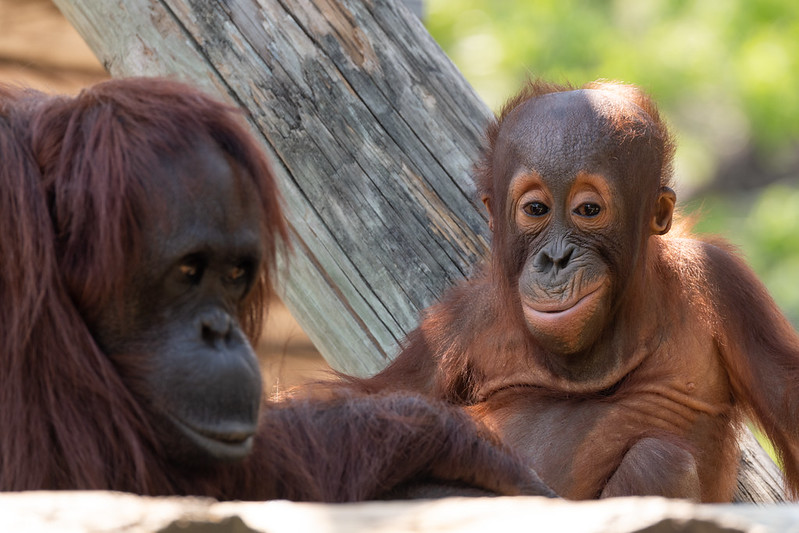





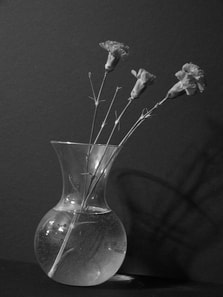
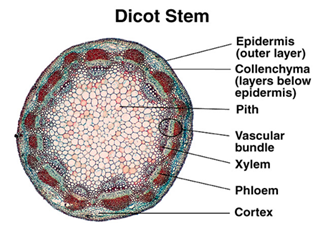
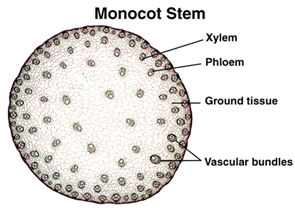
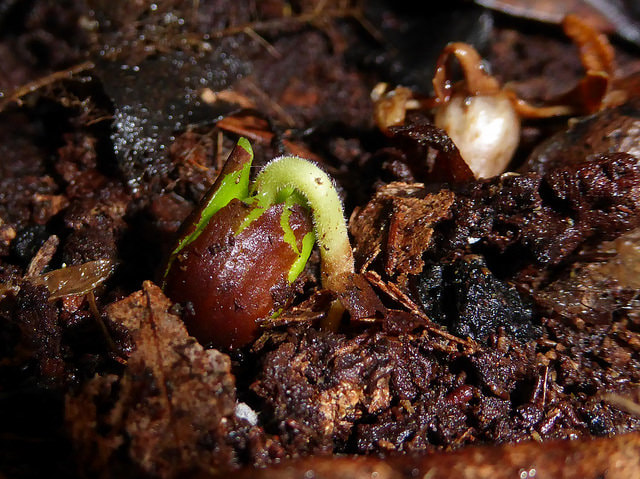
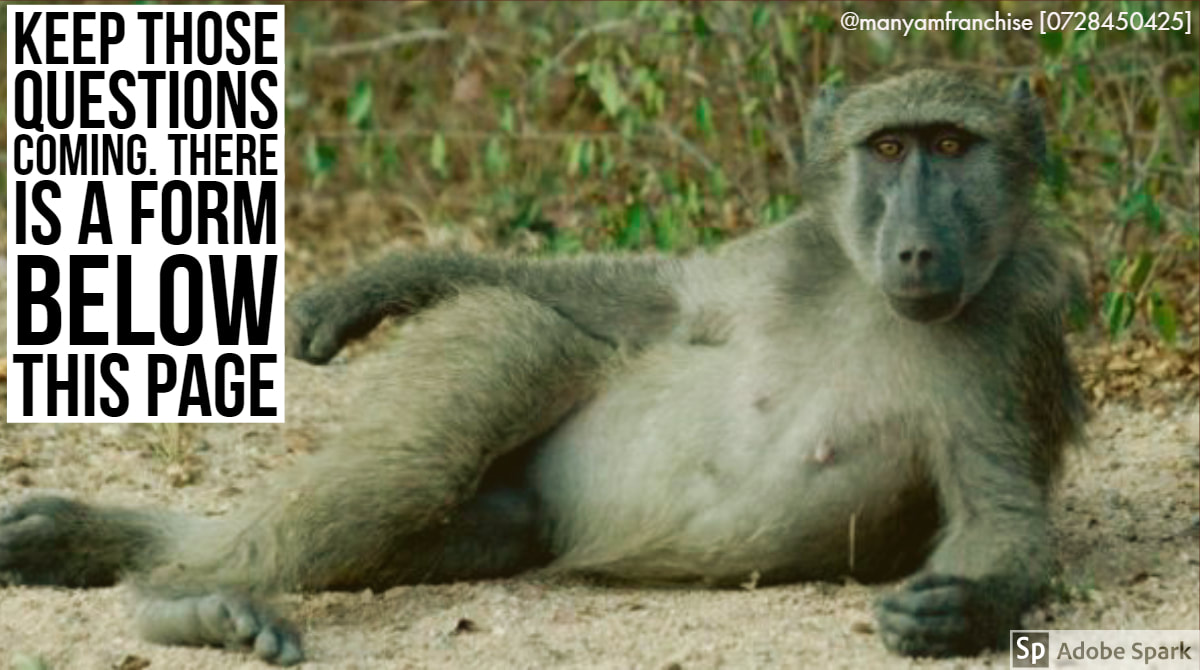
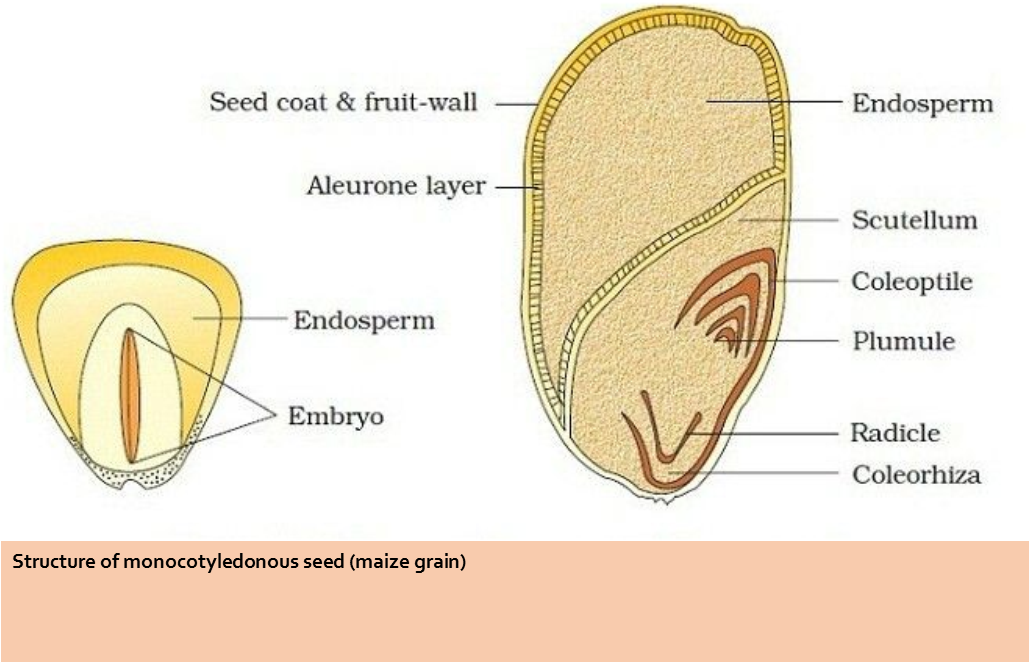
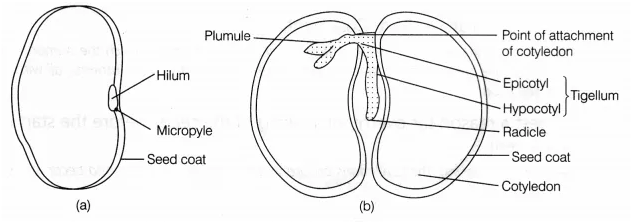
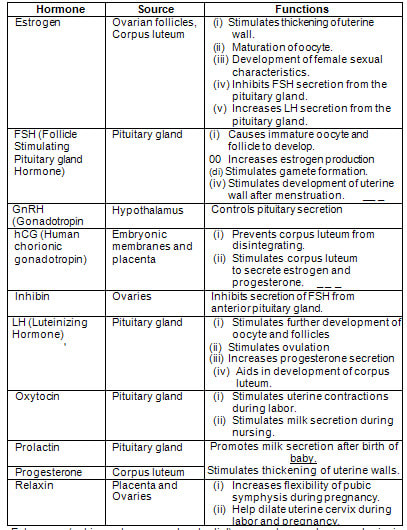
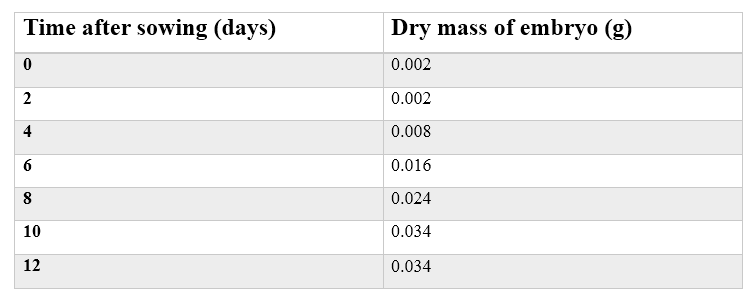

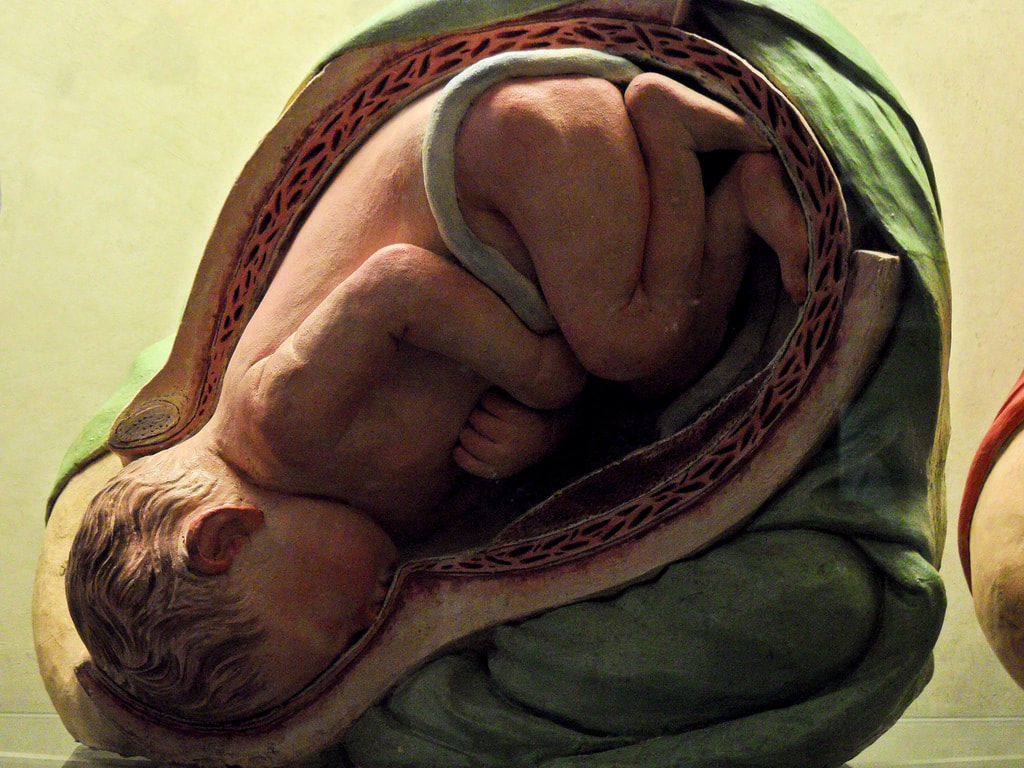
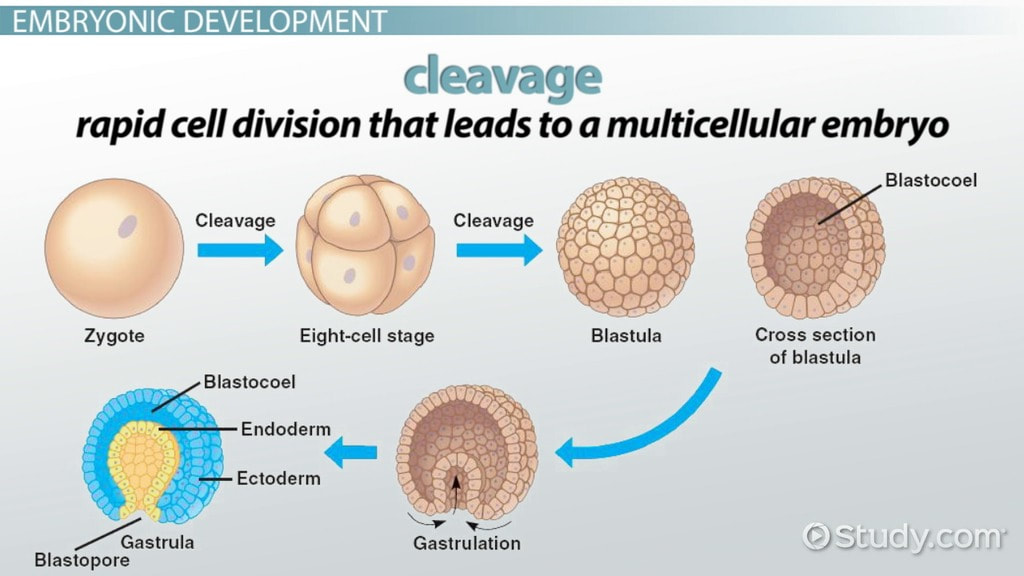
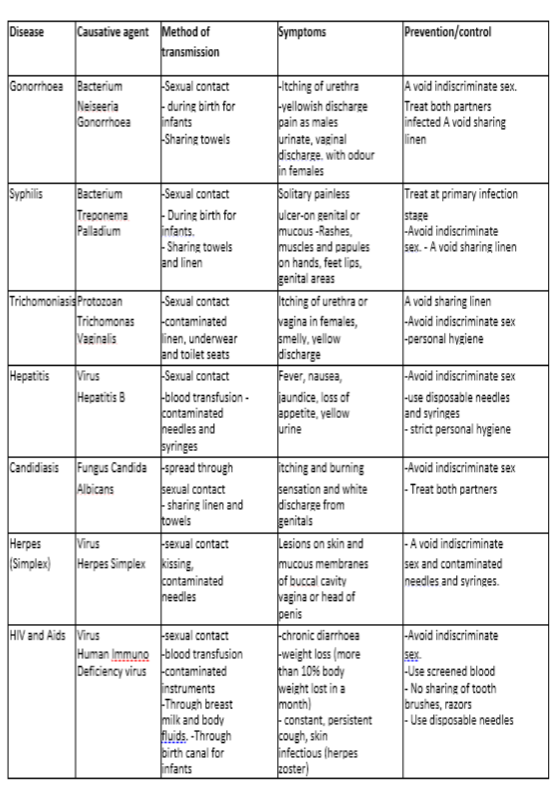
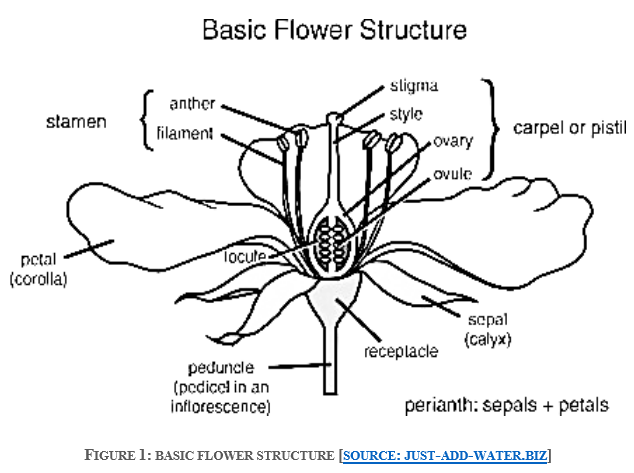

 RSS Feed
RSS Feed

